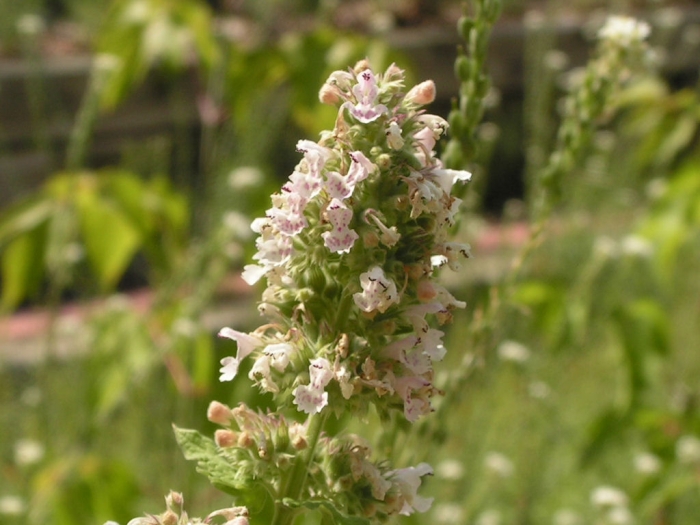Catnip
(Nepeta cataria)
Catnip (Nepeta cataria)
/
/

D. Gordon E. Robertson
CC BY-SA 3.0























































Estimated Native Range
Summary
Catnip is valued for its ease of maintenance and drought tolerance, making it a suitable choice for gardeners seeking a low-maintenance plant. It is often used in gardens for its ornamental qualities and its ability to attract cats and butterflies. Additionally, it serves as a natural deer deterrent. Catnip thrives in full sun to part shade and prefers soils with slow to medium drainage. While it can tolerate low water conditions, moderate watering will support more vigorous growth. It is important to note that Nepeta cataria can become invasive outside its native range, particularly in the United States, so gardeners should consult local guidelines before planting.CC BY-SA 4.0
Plant Description
- Plant Type: Herb
- Height: 2-3 feet
- Width: 2-3 feet
- Growth Rate: Rapid
- Flower Color: Purple, White
- Flowering Season: Spring, Fall
- Leaf Retention: Deciduous
Growth Requirements
- Sun: Full Sun, Part Shade
- Water: Low, Medium
- Drainage: Slow, Medium
Common Uses
Bee Garden, Bird Garden, Border Plant, Butterfly Garden, Deer Resistant, Drought Tolerant, Edible*Disclaimer: Easyscape's listed plant edibility is for informational use. Always verify the safety and proper identification of any plant before consumption., Fragrant, Groundcover, Hummingbird Garden, Low Maintenance, Potted Plant, Rabbit Resistant, Salt Tolerant, Showy Flowers, Street Planting
Natural Habitat
Dry grasslands, forest edges, and riverbanks
Other Names
Common Names: Catmint, Catwort, Field Balm, Katteurt, Almindelig Katteurt, Echte Katzenminze, Katzenminze, Gewöhnliche Katzenminze, Hierba Gatera, Menta De Gato
Scientific Names: , Nepeta cataria, Nepeta cataria var. citriodora, Nepeta laurentii, Nepeta citriodora, Nepeta macrura, Nepeta tomentosa, Nepeta vulgaris, Calamintha albiflora, Cataria tomentosa
GBIF Accepted Name: Nepeta cataria L.